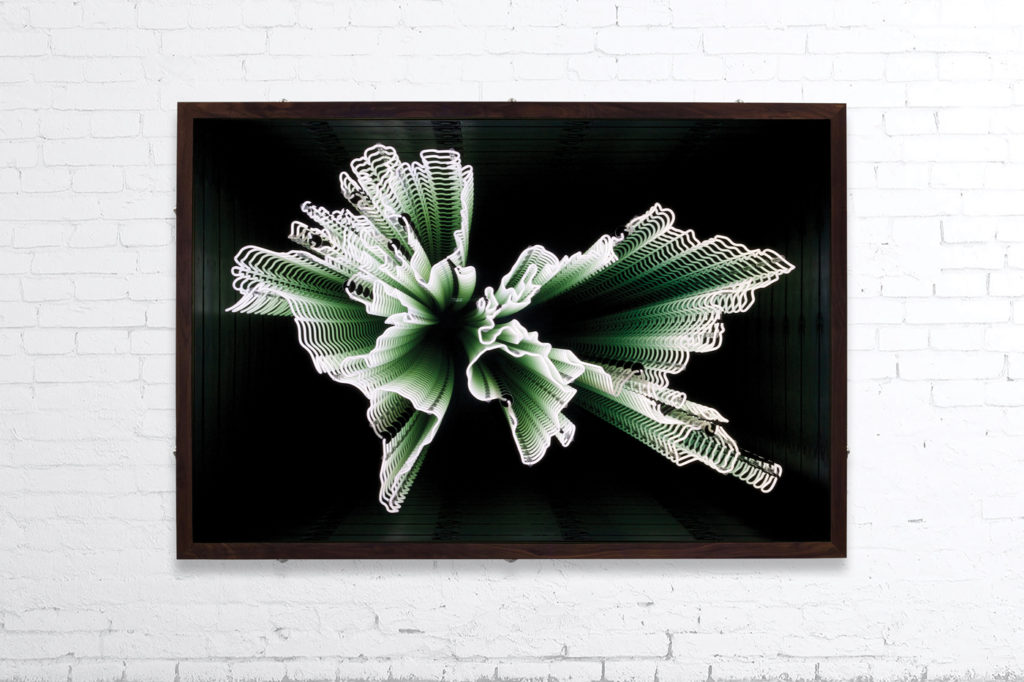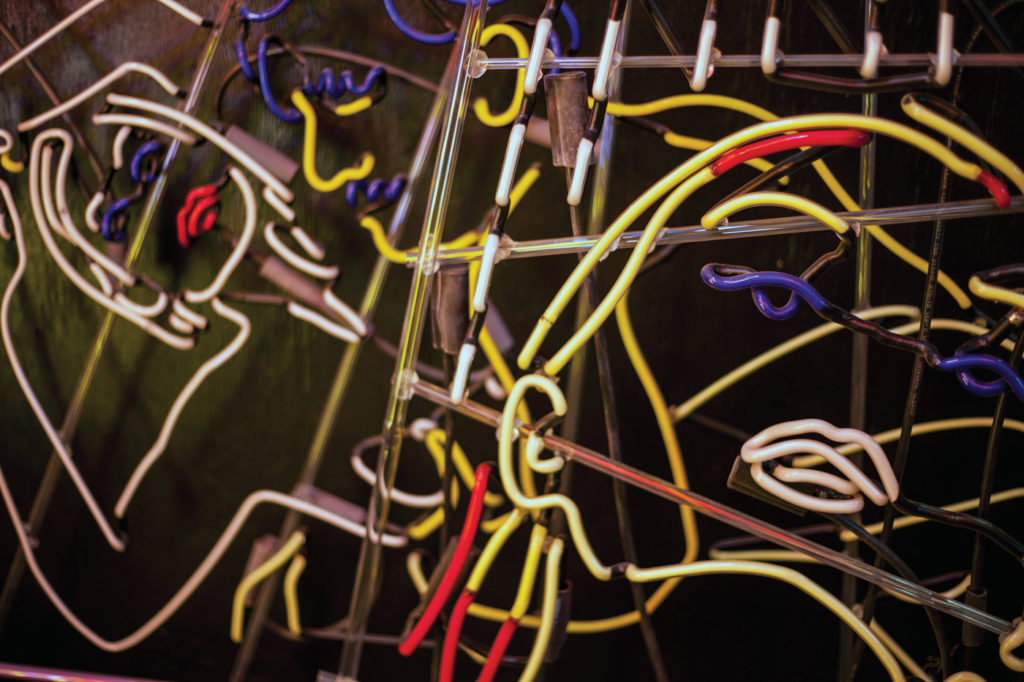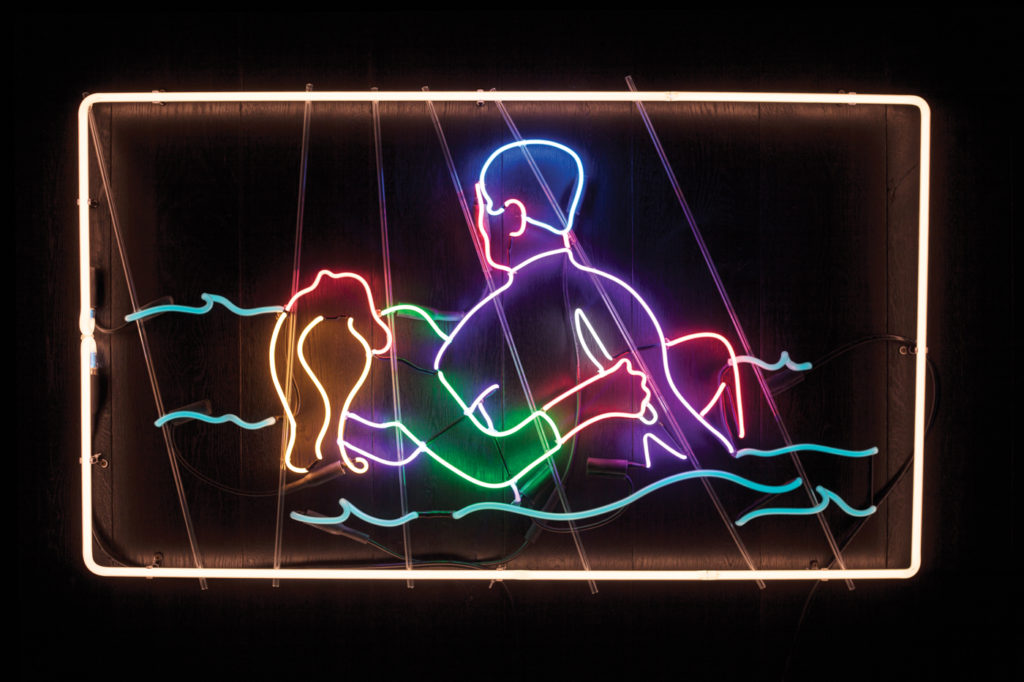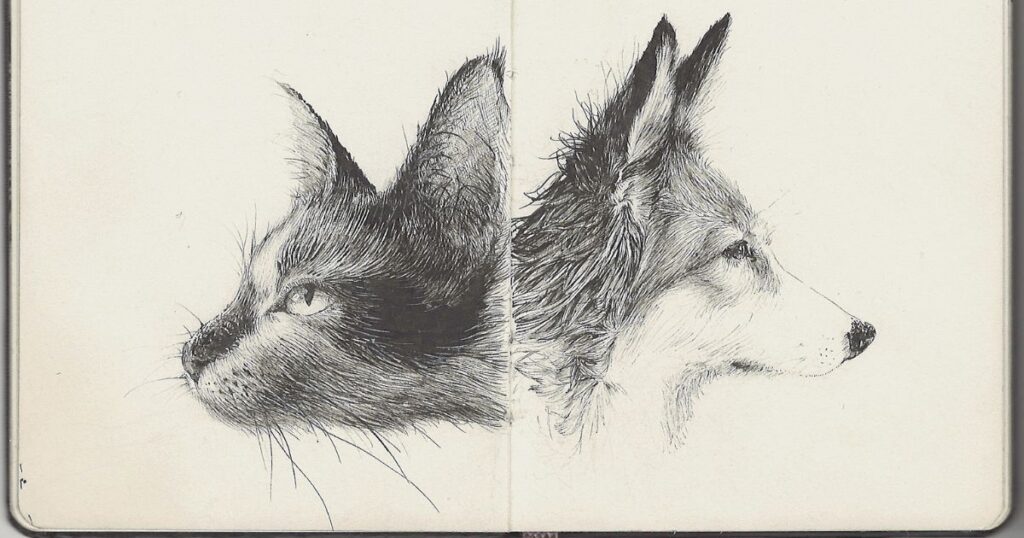In Glowing Terms

Neon art puts the power to bend light into an artist’s hand. Discover an artist on the cusp of breakthroughs in neon and how the phenomenon began. Enjoy!
Neon Art: Bending Light to Design
Noticing light at play on an object is an early challenge many artists encounter. Their first furtive trees float in space until shadow grounds them and sunlight offers dimension.

The interpretation and replication of light is a pursuit that has obsessed artists from the time of Leonardo da Vinci’s forays into chiaroscuro to the Impressionists’ elevation of light from technique to subject. But in the 1960s, some artists shifted from trying to capture light within two-dimensional work and instead began using it as the medium itself.
Minimalist sculptor Dan Flavin was among the first to incorporate commercially available fluorescent lights in this way. In the decades since, countless other artists have influenced contemporary culture through light-centric art.
There’s Jenny Holzer, with her text-based neon art popping up as a Twitter background image. Then there’s Drake with his “Hotline Bling” video — a straightforward (if verging on replication) take on James Turrell’s atmospheric lighted installations. In New York, neon now seems as likely to be found in an art gallery as lighting up a bar. Is it my imagination, or am I seeing neon everywhere?

Who Ya’ Gonna Call?
“We were the first neon gallery in the world and, like anything else, neon goes up and down, but we’re making more neon now than we’ve ever made before,” says Jeff Friedman of Let There Be Neon, a Manhattan-based neon art signmaking outfit that’s been in business since 1972.
In addition to their commercial work — for clients that range from Bloomingdale’s to pizzerias — the shop also does extensive fabricating for some of contemporary light art’s biggest names, including Tracey Emin, Doug Wheeler and Iván Navarro.
To better understand what an artist might expect in working with a fabricator, Friedman walked me through a typical collaboration with Navarro, a Chilean-born artist known for his sociopolitical works.
“Iván is somebody with a very clear vision,” says Friedman. “Because he often has different materials, his drawings come to us almost from an architectural standpoint, with the neon already figured into his structure. So with Iván, we get the sketch and fine-tune it. He comes into the shop and we figure stuff out — really small details, like what size support posts should be and where the wiring goes.”

Despite the technical challenges of working in neon, its attributes make it desirable for artists going after a specific effect. Its continuous, unwavering light and ample color choice offer what other materials can’t.
As Friedman explains, “If you’re looking at a piece of neon and an incandescent bulb, the light is different; neon is much warmer and LEDs are cold. Neon is an even glow of light, without hot spots.” Before I ended my call with Friedman, I wanted to know if he had any advice for aspiring neon artists.
Does the shop, I wondered, ever work with absolute neon art beginners? Artists who have no idea what they’re doing with neon? His reply: “All the time. Someone comes in and says, ‘You know I’ve never worked with neon, but I have this idea …’ We get that a lot.”

Artist Profile: Kate Hush
Inspired to create neon art? You might look to the work (and grit) of artist Kate Hush, whose neon career was launched by taking a weekend workshop just five years ago.
ARTISTS MAGAZINE (AM): How does a piece begin for you?
KATE HUSH (KH): The neon process starts with an idea that is then translated into a bending pattern, which, simply put, is a line drawing. But it’s not your typical gestural or wispy sketch.
The lines need to be broad and precise. That’s because they’re the blueprint for the glass that your design will eventually be made of. Each stroke needs to match the tubing as precisely as possible.
If the glass tubing (like a long drinking straw made of glass) is ½-inch wide, the lines that make up your design also need to be ½-inch wide. To achieve this, I draw all of my patterns on the computer. This gives me total and unwavering control over the line width.

Once the drawing is finished, I print the pattern onto a special bending cloth and place it on a bending table (a wooden table — nothing high-tech or glamorous). Next, I grab my glass and light the gas-and-air-powered torches.
I then take one of the tubes and hold it within the flame of the torch, slowly going back and forth until the glass heats and becomes malleable. When the glass is just soft enough, I remove it from the fire and quickly place it on top of my drawing on the table. Then I bend the glass to mimic the exact lines I’ve drawn.
When all the tubes are finally bent into a complete pattern, the last step is to seal one end of the tube, fill the open end with neon gas and seal that opening, which traps the gas. Then you hook the tube up to a little power supply and light it.

The Kitsch Factor
AM: Do you think the way the general public sees neon is catching up to the way the art world sees it?
KH: I find that the general public appreciates neon artistically more so than the art world. I would even say that neon is still suspended in this stigma of kitsch with galleries and art institutions, and I can’t wait until it finally finds its way out.
I say this because I have encountered galleries that have straight up told me they want to hang neon in their space because people love to take pictures in front of it, not even considering what it is that’s been bent.

Like No Other
AM: What do you feel you can achieve in neon that you couldn’t do in another medium?
KH: I’m not sure my work would be as impactful if it was a painting or a drawing. I also think that the limitations brought on by the restrictions of what you can do to the glass can make the work more interesting.
I’m someone who can easily go over the top — but the obstacle of having to keep everything as simple as possible can lead me down a road of creating something more interesting than the piece I’d originally intended.

Where to Start
AM: Do you have any advice for an artist who wants to experiment with neon art?
KH: Take a neon workshop. There are so many happening globally right now. If you can’t find any near you, grab a group of people that are also interested and demand it at the closest neon shop you can find. Trust me, these shop owners love showing off their skills. I’ve never come across one that doesn’t. Sometimes you can’t get them to stop.
High-Key Color
Appreciate the bold color and light of neon but want to keep to the canvas? We’ve got the perfect resource: Painting Light: The Cape School Method with Camille Przewodek video download. Top artist and instructor Przewodek guides you through how to see the intensity of the colors around them and, most importantly, how to capture them in your paintings.
A version of this story appeared in Artists Magazine. To receive the magazine, click here to subscribe.





Have a technical question?
Contact UsJoin the Conversation!